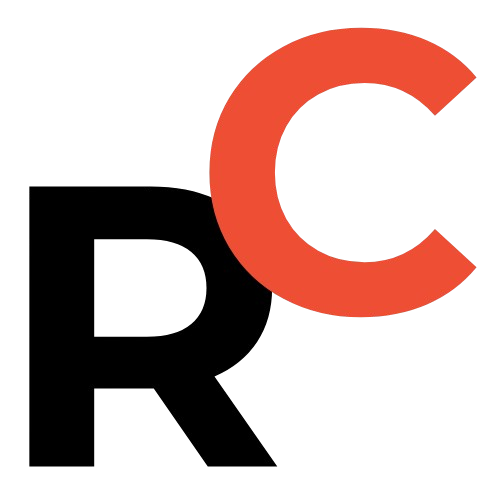Key Points
- China is rapidly advancing in Brain-Computer Interfaces (BCI), driven by significant R&D breakthroughs and strong government policy support accelerating commercialization.
- Regional initiatives, like Sichuan’s plan targeting 3,000 invasive BCI surgeries annually by 2030 and serving over 100,000 patients, alongside Beijing’s and Shanghai’s strategies, highlight multi-level government commitment.
- A major step towards commercial viability is the release of the nation’s first BCI medical service prices by the Hubei Provincial Medical Insurance Bureau, including fees for invasive and non-invasive procedures.
- Recent clinical trials by Jieti Medical (Jiētī Yīliáo 阶梯医疗) demonstrated remarkable success with an ultra-flexible minimally invasive system, allowing a subject with limb amputation to control a mouse and play games with thoughts alone.
- The global BCI market is projected to reach over $6 billion USD by 2028 (25.22% CAGR), and China’s market, currently billions of RMB but less than a tenth of the global size, shows huge untapped potential, predicted to exceed ¥120 billion RMB (approx. $16.60 billion USD) by 2040.

The Brain-Computer Interface (BCI) landscape in China is experiencing a seismic shift, with continuous breakthroughs in R&D and strong policy support accelerating its journey towards wide-scale commercialization.
This isn’t just hype; we’re seeing concrete actions and impressive results.
Policy Combinations: The Rocket Fuel for BCI Industry Development
China’s commitment to becoming a BCI powerhouse is crystal clear, with government bodies at multiple levels rolling out strategic plans.
Sichuan’s Ambitious BCI Blueprint
Just recently, on May 12th, a collective of eight departments, including the Sichuan Provincial Department of Economy and Information Technology (Sìchuān Shěng Jīngjì hé Xìnxī Huà Tīng 四川省经济和信息化厅), unveiled the “Sichuan Province Brain-Computer Interface and Human-Computer Interaction Industry Breakthrough Action Plan (2025—2030).”
Their goal? To establish a nationally leading innovation and development hub for the BCI and human-computer interaction industry.
The plan sets some seriously ambitious targets for 2030:
- 3,000 invasive BCI surgeries performed annually.
- BCI tech serving over 100,000 patients per year suffering from neurodegenerative diseases, mental illnesses, and addiction.
- Rehabilitation equipment applications exceeding 20,000 instances per year.
They’re also pushing for multi-scenario applications, aiming to boost the adoption of next-gen human-computer interaction tech in crucial sectors like industrial manufacturing, healthcare, and emergency safety.
This isn’t just about numbers; it’s about creating a tangible impact on people’s lives and various industries.

Find Top Talent on China's Leading Networks
- Post Across China's Job Sites from $299 / role
- Qualified Applicant Bundles
- One Central Candidate Hub
Your First Job Post Use Checkout Code 'Fresh20'

Nationwide Policy Momentum: Beijing, Shanghai, and Beyond
Sichuan isn’t alone. Earlier this year, other major regions laid out their BCI game plans:
-
Beijing’s “Action Plan for Accelerating Innovative Development of Brain-Computer Interfaces (2025-2030)” (issued in January):
- Focuses on strengthening diversified financial support.
- Encourages government and investment funds to ramp up early-stage investment in BCI ventures. This is crucial for nurturing nascent technologies.
-
Shanghai’s “Brain-Computer Interface Future Industry Cultivation Action Plan (2025—2030)”:
- Prioritizes breakthroughs in cutting-edge scientific and technological issues.
- Proposes a unique decision-making consultation system involving “scientists + entrepreneurs + investors” to strategically deploy projects. This kind of collaborative ecosystem is key for translating research into market-ready products.
- Emphasizes strengthening the integration of various elements to collaboratively promote product R&D innovation.
Standardization and Regulatory Support: Laying the Groundwork
Beyond regional initiatives, there’s a national push for standardization and streamlined regulation.
The first domestic online platform for “Brain-Computer Interface Patents and Intellectual Property” recently launched, a vital step for protecting innovation and fostering a healthy competitive environment.
On March 31st, the National Medical Products Administration (NMPA) released the “Measures for Optimizing Full-Lifecycle Supervision to Support the Innovative Development of High-End Medical Devices (Draft for Comments).”
This draft is a big deal because it aims to:
- Optimize special approval procedures for innovative medical devices.
- Strengthen registration guidance for “揭榜挂帅” (jiēbǎng guàshuài) products—a system where key technological challenges are publicly listed for capable entities to tackle—especially in AI and biomaterials.
- Coordinate with other departments to introduce support policies specifically for BCI-based medical devices.
- Continuously improve the standards system, including research on new biomaterials like flexible BCI electrodes. This focus on materials is critical for developing more effective and safer implantable devices.
Getting Paid: The First BCI Medical Service Prices Emerge
In a landmark move at the end of March, the Hubei Provincial Medical Insurance Bureau took the lead by releasing the nation’s first medical service prices for BCI procedures.
This is a critical step for commercial viability:
- Implantation fee for invasive BCI: ¥6,552 RMB (approx. $906.22 USD) per procedure.
- Removal fee for invasive BCI: ¥3,139 RMB (approx. $434.16 USD) per procedure.
- Adaptation fee for non-invasive BCI: ¥966 RMB (approx. $133.61 USD) per session.
As Pacific Securities (Taipingyang Zhengquan 太平洋证券) rightly pointed out, this connects the “last mile” for BCI services to reach patients in the medical field. It provides crucial policy guarantees for clinical application and promotes the translation of cutting-edge medical innovations into real-world treatments.
Without clear pricing and reimbursement pathways, even the most groundbreaking tech can stall.

ExpatInvest China
Grow Your RMB in China:
- Invest Your RMB Locally
- Buy & Sell Online in CN¥
- No Lock-In Periods
- English Service & Data
- Start with Only ¥1,000

Continuous R&D Breakthroughs: The Innovation Engine
Policy support is fantastic, but it’s the relentless pace of technological R&D that’s truly pushing the boundaries of what’s possible with BCI.
Jieti Medical’s Mind-Blowing Clinical Trial
The recent clinical trial results from Jieti Medical (Jiētī Yīliáo 阶梯医疗) are nothing short of astounding.
A test subject, who had tragically undergone amputation of all four limbs due to a high-voltage electric shock, demonstrated remarkable abilities just one month after electrodes were implanted in his motor cortex.
He could skillfully:
- “Click” a mouse using only his thoughts.
- Play Gomoku (Five-in-a-Row).
- Play Mario Kart.
Zhao Zhengtuo (Zhào Zhèngtùo 赵郑拓), founder of Jieti Medical and a researcher at the Center for Excellence in Brain Science and Intelligence Technology, Chinese Academy of Sciences (Zhōngguó Kēxuéyuàn Nǎozhì Zhuóyuè Zhōngxīn 中国科学院脑智卓越中心), shared that these are just preliminary results.
“The team is currently conducting post-operative brain control training for the subject… The entire training process will last 3-6 months, and there will be continuous result releases,” he stated.
This success with an ultra-flexible minimally invasive implantable BCI system signals major progress in the field.
Understanding BCI Technology: Pathways and Potentials
BCI technology isn’t a one-size-fits-all solution. It encompasses diverse pathways and is currently in a period of accelerated technological evolution.
Based on signal acquisition and output methods, BCI tech is generally categorized into:
- Invasive BCI: Electrodes are placed directly into the brain tissue. Offers the highest signal quality but requires surgery. (Like Jieti Medical’s approach).
- Semi-invasive BCI: Electrodes are placed on the brain’s surface, under the skull.
- Non-invasive BCI: Sensors are placed on the scalp (e.g., EEG). Easiest to use but can have lower signal fidelity.
The core technological hurdles in BCI are primarily in the upstream and midstream segments of the industrial chain. These include:
- Hardware: Developing advanced electrodes and chips.
- BCI Surgery: Refining surgical techniques for safety and efficacy.
- Brainwave Data: Innovations in acquisition, processing, and analysis of complex neural signals.
The main functions of BCI technology are incredibly diverse and can be summarized as:
- Monitoring: Tracking brain activity for diagnostics or research.
- Substitution: Allowing individuals to control devices or communicate when motor pathways are compromised.
- Improvement/Restoration: Helping to recover lost neurological functions.
- Enhancement: Potentially augmenting cognitive or physical abilities.
- Supplementation: Adding new capabilities.
Currently, downstream applications are heavily focused on the medical field. In 2023, medical applications accounted for a whopping 56% of China’s BCI market.
Within medicine, BCI is being applied to:
- Diagnosis and treatment of consciousness and cognitive disorders.
- Diagnosis and treatment of mental illnesses.
- Diagnosis and treatment of motor function disorders.
- Diagnosis and treatment of sensory defects.

Resume Captain
Your AI Career Toolkit:
- AI Resume Optimization
- Custom Cover Letters
- LinkedIn Profile Boost
- Interview Question Prep
- Salary Negotiation Agent

Market Momentum: The Booming Business of Brain Tech
The future for BCI isn’t just promising; it’s potentially massive from a market perspective.
Global and China Market Projections: A Skyrocketing Trajectory
According to predictions by the Qianzhan Industry Research Institute (Qiánzhān Chǎnyè Yánjiūyuàn 前瞻产业研究院):
- The global BCI market size reached $1.98 billion USD in 2023.
- It’s expected to surge past $6 billion USD by 2028.
- This represents a five-year compound annual growth rate (CAGR) of a staggering 25.22%.
While healthcare is the most mature track globally, China’s BCI market is rapidly catching up.
Currently, the market size of BCI equipment in China is in the billions of RMB, but this is still less than one-tenth of the global market share. This signals huge untapped potential.
Looking further ahead, institutions predict that by 2040, China’s comprehensive BCI market size could exceed ¥120 billion RMB (approx. $16.60 billion USD), with an average annual compound growth rate of about 26%.
These are not just impressive numbers; they are indicators of a transformative technology hitting its stride.
Listed Companies Ramping Up BCI Investments
It’s not just startups; established listed companies are also increasing their bets on the BCI field, primarily focusing on downstream solutions and applications.
-
Vishee Medical (Wěisī Yīliáo 伟思医疗) recently stated they have a rich pipeline of products and technologies in non-invasive BCI.
This includes products like group biofeedback, multi-parameter biofeedback, and neonatal EEG monitoring systems.
Notably, Vishee Medical has already secured dozens of patents related to BCI, underscoring their R&D commitment.
-
Xiangyu Medical (Xiángyǔ Yīliáo 翔宇医疗) mentioned its independently developed BCI series, which includes multiple wireless EEG acquisition systems.
These systems support up to 256 channels, versatile enough for various rehabilitation scenarios.
Excitingly, Xiangyu Medical is also developing products that combine BCI with exoskeleton robots – a powerful synergy for neurorehabilitation.

Peeking into the Future: What’s Next for BCI Commercialization?
The momentum is undeniable, but what do the experts foresee for the near term?
The Road to Commercialization: Analyst Insights
CSC Financial (Zhōngxìn Jiàntóu 中信建投) offers a pragmatic yet optimistic view.
They believe that although BCI technology is still in the early stages of development, its R&D and application potential is enormous.
The key takeaway? Products are expected to gradually commercialize in the next 3-5 years.
This timeline suggests that the breakthroughs and policy support we’re seeing now are laying the foundation for tangible products and services to hit the market relatively soon.
With continuous advancements in R&D, robust policy frameworks, and growing investment, the Brain-Computer Interface industry in China is not just accelerating—it’s preparing for a new era of innovation and real-world impact.

References
- 技术研发持续突破 脑机接口行业商业化提速 – China Securities Journal
- China Is Making Brain-Computer Interfaces a National Priority – IEEE Spectrum
- China’s brain-computer interface innovations are catching up with US, but industry faces hurdles, experts say – South China Morning Post
- Beijing unveils ambitious brain-computer interface plan to rival US efforts – Reuters
- Vishee Medical: Focus on non-invasive BCI; rich pipeline including biofeedback and EEG systems; holds dozens of BCI-related patents.
- Xiangyu Medical: Developed BCI series with multi-channel wireless EEG systems (up to 256 channels); developing products combining BCI with exoskeleton robots for rehabilitation.
- BCI technology is currently in the early stages of development.
- R&D and application potential is enormous.
- Products are expected to gradually commercialize in the next 3-5 years.

![STAR Market Pharma 2024 Report Card: Profit Growth for 53%, R&D Spend Hits ¥350M Average [FreshFromChina]](https://freshfromchina.com/wp-content/uploads/2025/05/STAR_Market_Pharma_2024_Report_Card__Profit_Growth_for_53___R_D_Spend_Hits_350M_Average____FreshFromChina-150x150.png)



